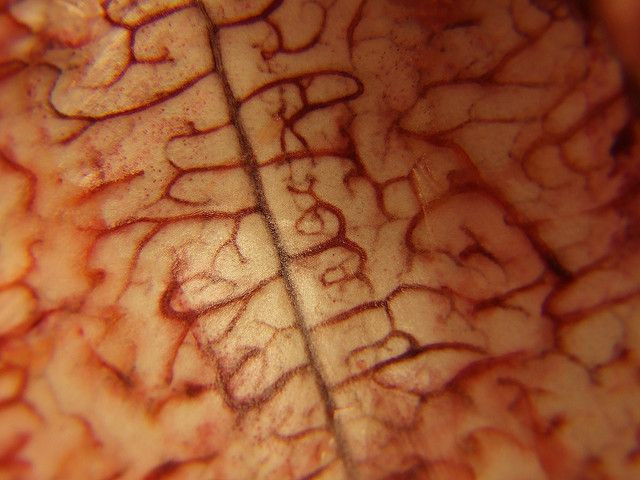Controversial Multiple Sclerosis Theory, Venus Narrowing, Put To Rest After Advanced Imaging Disproves Causality

A controversial theory known as chronic cerebrospinal venous insufficiency (CCSVI) claims that multiple sclerosis develops when the veins leading from the brain to the heart become narrow, which leads to blockages and disruptions in blood flow. But a new study, which sought to test the credibility of CCSVI, has now found that there is no link between narrow veins and having multiple sclerosis.
Multiple sclerosis is an autoimmune disease that affects the myelin sheaths surrounding nerves. It affects their ability to communicate and causes interference between the brain, spinal cord, and other areas of the body, causing a number of debilitating symptoms, including impaired walking and speaking.
Researchers from the University of Vancouver found that venous narrowing was not unique to multiple sclerosis patients, but was comparably present in the veins of siblings without the disease and unrelated healthy participants.
“Our results confirm that venous narrowing is a frequent finding in the general population, and is not a unique anatomical feature associated with multiple sclerosis,” Dr. Anthony Traboulsee, associate professor of neurology at the university, said in a statement. “This is the first study to find high rates of venous narrowing in a healthy control group as well as the first to show that the ultrasound criteria usually used to ‘diagnose’ CCSVI are unreliable.”
They used both ultrasound technology and catheter venography, which is “usually thought of as the gold standard of venous imaging,” to compare the shapes and sizes of veins between the brain and the heart with those at a normal reference point just below the jaw. Catheter venography involves an X-ray of the veins after injecting it with a dye.
When they did these tests on 79 patients with multiple sclerosis, 55 of their siblings, and 43 unrelated participants, they found venous narrowing in 74 percent, 66 percent, and 70 percent of participants, respectively. They also found that the ultrasound criteria for CCSVI spotted only 42 percent of the narrowed veins that that catheter venography did.
“If chronic venous insufficiency actually existed, the ultrasound findings of this study and previous studies would suggest that up to half of the general and otherwise healthy population should be judged to be seriously ill because of venous insufficiency of the cervical veins,” Dr. Friedmann Paul and Dr. Mike Wattjes wrote in a related commentary. “The fact that some changes in the venous system have been described in association with multiple sclerosis does not imply causality.”
Recently, experts have questioned whether CCSVI is a cause of multiple sclerosis. A recent study tested whether a treatment, called a “liberation procedure” — essentially an angioplasty that widens the veins — would relieve symptoms of multiple sclerosis. They found that some patients experienced no effect, while others began to develop brain lesions, indicating progression of multiple sclerosis. Between these previous treatment-based studies, and the more recent diagnostic-based study, the CCSVI theory may be put to rest.
Source: Traboulsee A, Knox K, Machan L, et al. Prevalence of extracranial venous narrowing on catheter venography in people with multiple sclerosis, their siblings, and unrelated healthy controls: a blinded, case-control study. The Lancet. 2013.



























